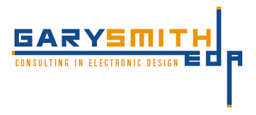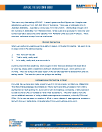ASP-DAC, the DAC Down Under
This was a very interesting ASP-DAC. I haven’t gotten the final figures but I imagine that attendance was down from ASP-DAC 2011 in Yokahama. There was a noticeable drop in Japanese attendees. Australia is a long ways from everywhere. Interestingly though were the numbers of attendees from Mainland China. What could be a good sign for DAC this year is that Australia is about the same distance from Mainland China as is San Francisco. There were two main take-a-ways from the conference.
Parallel Computing
What was really encouraging was the quality of papers on Parallel Computing. We seem to be in phase three in Parallel Computing:
1. How hard can this be?
2. This is really, really hard!
3. It is really, really hard, but we can do it.
It seems that the EDA academics have brought in their EDA tool development experience to what has always been considered a Software Development issue. And it seems to be working. They are doing some deep research into parallel algorithmic development and are seeing results. The next few years are going to be exciting.
Homogeneous Computing is Dead
It sounds like we have also made a leap forward in microprocessor architecture. (Read my blog: The New Microprocessor Architecture: There isn’t one! It’s a Cluster) Intel’s approach is built around a CPU surrounded by hard wired accelerators. The other papers were the more traditional approach of using multiple heterogeneous processors, primarily CPUs and GPUs. So far the has been no mention of NPUs or other classes of heterogeneous processors. But with the work being done on parallel algorithms we should see some soon.
Who’s Talking About Gary Smith EDA?
By Gary Smith EDA on November 17, 2016
Mentor Graphics, One of Big Three in Electronic Design Automation, Sells to Siemens for $4.5 Billion
By Gary Smith EDA on November 16, 2016
Electronic Design Magazine
Mentor Graphics, One of Big Three in Electronic Design Automation, Sells to Siemens for $4.5 Billion
By Gary Smith EDA on November 16, 2016
By Gary Smith EDA on October 26, 2016
By Gary Smith EDA on October 26, 2016



